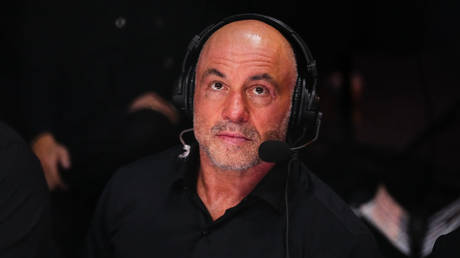When people discuss the independent wrestling revolution of the 2000s, and how it shaped the modern landscape of professional wrestling, the same promotions normally get mentioned — ROH and PWG were the launching pads for many of the main stars of both WWE and AEW. Yet one promotion which doesn’t get mentioned as much, but had that same level of influence, was Shimmer, an all-women’s independent promotion which taped four shows a weekend for 15 years and was an incubator for the current women’s wrestling scene. Twenty years ago today, Shimmer launched and changed pro-wrestling.
In 2004, Dave Prazak was an announcer for IWA Mid-South, a Midwest indie wrestling promotion run by ECW veteran Ian Rotten. One of Rotten’s star trainees at the time was a female referee turned wrestler named Mickie Knuckles. “I was friends with [indie wrestlers] Lacey and Rain out of Minnesota, and I suggested that we bring them down to be some of Mickey’s first opponents,” Prazak recalls. “We eventually started bringing in more women to work with Mickey and I pushed for a women’s division in IWA.”
IWA ran an all-women’s show, Volcano Girls, in the middle of 2004 to crown a women’s champion, which was a success. However the planned second Volcano Girls show ended up canceled, a victim of IWA’s persistent money problems.
“I was working FIP in Florida and I was telling them the story about how frustrated I am about working for Ian,” Prazak says. “I scheduled this women’s show that had to get canceled. They’re just like, ‘Why don’t you just do your own show and we’ll sell it through the ROH website?’ Well, I don’t want to be a promoter. But at the same time, because we had the success with the Volcano Girls show, I knew that if we [ran] a women’s show, it would probably do well. Even if it doesn’t draw, I bet it’ll sell pretty decently on DVD.”
Prazak had reason to believe. While the first Shimmer show didn’t draw very many fans, it became a big seller on DVD, proving the financial viability of the idea. “When we released that thing on the ROH site, it was selling quickly,” he says. “It didn’t sell the same number of units as [Kenta] Kobashi and [Samoa] Joe, but it was selling as quickly. We were lucky we preorder 1,000 units, because they all sold out.
“We were developing a following. I mean, you know how it was with the DVD era. All it takes is some interest DVD-wise on the internet, and as long as it’s a product that people are willing to spend money on, it’s viable.”
The first taping was two shows, but soon after that Shimmer began taping four shows a weekend — two each day — so they would have four volumes to release. Those weekends became a chance for women’s wrestlers all over the world to learn from each other and develop. “I remember waking up Monday morning [after the four-show weekend] and feeling like I had been in a car wreck, but the experience I got was like nothing else,” says future WWE performer and coach Serena Deeb.
“It was a sisterhood, we all worked together and the camaraderie and relationships we developed were unlike anything I had experienced in the wrestling business before or after. It was amazing to have the opportunity to learn from, and work with, women from all over the world.”
Once the shows became a regular thing, they became a magnet for the best female talent in wrestling. “I first discovered this when I was in high school,” says indie wrestling star Nicole Matthews. “I first got a best of IWA-MS Women’s division in Grade 11, and I just fell in love with those women. Shimmer started a month before I started training, and I had no desire to wrestle in the WWE at that time — there wasn’t much women’s wrestling on TV. My only goal in wrestling was to wrestle for Shimmer.
“When I started wrestling in Vancouver, there were hardly any other women’s wrestlers around. I think a lot of people who would come to [perform for] Shimmer would experience that in their hometown as well. So Shimmer was just an opportunity to bring people together who never would wrestle each other.”
Along with allowing wrestlers to learn in the ring from their peers all over the world, Shimmer also let them develop their characters beyond the cliches of the time. “Back when I was starting, there was one woman’s match per show, and you were [either] the bad girl or the good girl. Those were the only character options, right?” says Matthews. “So at Shimmer, I think it was pretty common for people to come in and be like, ‘Oh, well, we’re all women’s wrestlers. I can’t be the woman’s wrestler on this show. That doesn’t make sense.’
“So you’d need to evolve how you are as a [character] or your style a little bit more, and be like, ‘OK, well, what wrestler am I? Am I a technical wrestler? Am I a cheap heel? Am I influenced by more like southern ’80s style? Where do I fit into this whole group of women? Because now I just can’t be the woman’s wrestler. That’s not good enough.’ You have to stand out in this crowd of people.”
Many of the biggest names in current pro-wrestling honed their craft in that small ballroom in Berwyn, Illinois. Because it was a DVD product, the women in Shimmer had to aspire to a match quality which was uncommon in U.S. women’s wrestling at that time. Shimmer was in the same DVD market as indie promotions headed by Bryan Danielson, Samoa Joe and The Young Bucks, and they had to meet that standard. Thus it made sense that when the WWE and TNA started to focus more on in-ring women’s wrestling, they looked toward Shimmer.
“It’s not coincidental that basically their whole NXT roster at one point, or the majority of women’s wrestlers right now who are doing very well and competing at the high level, a lot of them were either in Shimmer directly or learned from people who were consistently at Shimmer,” Matthews says.
“Bayley worked for us as Davina Rose, she was a Serena Deeb protégé. We brought in Britani (AEW’s Saraya) and Sarya Knight as a mother-daughter tag-team out of England. Britani had just turned 18 and they worked two tapings before Britani got signed [by WWE],” Prazak recalls.
“Becky Lynch was one of the first international people we brought in, and I was going to make her my first champion before she got injured. Athena was a big part of our show — we used her early in her career from 2009 to about 2015 when she got signed. Kana (WWE’s Asuka), she came to the U.S. for the first time to work with us and Chikara, and we ended up using her for 30 shows. She wanted to spread her reputation around the world.”
Shimmer had some true wrestling highlights across its trailblazing 16-year tenure. There was a long, dominant title run at the beginning of Shimmer from Sara Del Ray, which mirrored the reign Samoa Joe had in ROH. There was the aforementioned mother vs. daughter feud between Sweet Saraya and Britani, the future subjects of Hollywood biopic “Fighting With My Family.” There was Asuka having dream matches against international and stateside stars like Ayako Hamada, Athena and Kimber Lee, plus other Joshi legends like Mayumi Ozaki and Aja Kong making rare U.S. appearances.
In the end, Shimmer wasn’t able to survive the pandemic and the generational shift away from DVD sales to streaming. COVID caused Prazak to cancel a March 2020 show with one-week’s notice, and that was too big of a financial hit for a company which always ran with thin profit margins. Shimmer ran a couple of shows in 2021 to honor tickets to the canceled event, but ultimately had to shut down.
Yet despite never making a big profit, the all-women promotion left an outsized historical footprint.
As Prazak sums it up: “I like the idea of being the women’s wrestling version of Memphis, where everybody passed through on their way to wherever they went. You know what I mean? Everybody worked the WMC TV studio at some point before they got a deal and ended up somewhere. Everybody worked the Berwyn Eagles Club for Shimmer before they got a deal. If that’s my legacy, I’m cool with it.”





